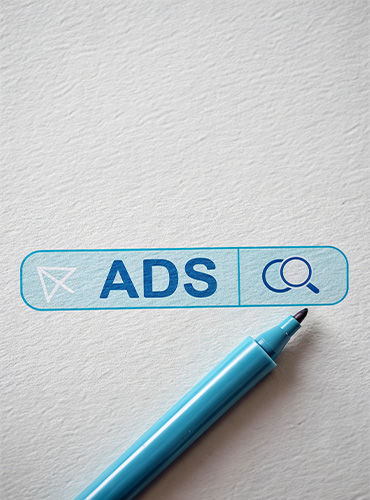
You may struggle to make your blog stand out. Many bloggers make mistakes that hurt their traffic and earnings. But don’t worry! We’ll show you a few common problems that could be holding your blog back from success.
Whether you blog a lot or just started, these tips can help you avoid mistakes and grow your blog. Want to improve your blogging and see great results? Let’s get started!

Understanding Your Target Audience
Ever thought about why some blogs get big while others don’t? The key is knowing your audience. If you understand who you’re writing for, your blog can really take off. Some blogs soar, while others barely get off the ground. The secret is understanding your target readers. If you know who you’re writing for, your blog can grow a lot. Some blogs get huge, but others don’t go anywhere. The key is knowing your audience. If you understand who you’re writing for, your blog can really succeed.
It feels like reading people’s minds. But you can understand what readers need and want. That sounds pretty cool, doesn’t it?
Imagine you’re having a party. You wouldn’t serve spicy tacos to guests who like mild tastes, right? The same is true for your blog content. You need to make sure your content matches your readers’ preferences. Serving the right content for your audience is important. Think about what they enjoy and give them that. This will help your blog content be more successful.
Knowing your audience is very important. It lets you create content that connects with them. Understanding your audience gives you power. You can make content that speaks to their hearts and minds.
Think about fitness writing. Your content for a 20-year-old gym fan will be very different from content for a 60-year-old starting gentle exercise. The content must fit the audience.
Understanding your audience helps you:
- Identify their pain points
- Speak their language
- Provide solutions they're actually looking for
It’s like being the friend who always knows exactly what to say. Pretty awesome, huh?
But how do you get to know your audience? Here are some tips:
- Create reader personas
- Analyze your website analytics
- Engage with your readers through comments and social media
- Conduct surveys or polls
1. Effective Call-to-Action (CTA) Strategies
Giving a great speech but not telling the audience what to do next can be frustrating. The same thing happens when you don’t include a Call-to-Action (CTA) in your blog posts. A CTA tells readers what you want them to do. It’s an important part of your blog content. Without a CTA, readers may not know the next step to take. Make sure to include a CTA at the end of your blog posts to guide your readers.
CTAs are like signs telling readers what to do next. They’re useful tools that can really improve your blog’s performance. Think of your CTA as the final part of your content. It turns passive readers into active participants. It’s like the cherry on top of your sundae. What works for one group may not work for another group. A/B testing can help you find the best CTA for your readers.
Remember, your call-to-action (CTA) is not just about getting leads. It’s about giving value to your readers. You can invite them to subscribe, download a free resource, or sign up for a webinar. Make sure it’s something they will truly benefit from. By using effective calls-to-action (CTAs), you’re helping your blog perform better. It’s a win-win situation. Your readers get value, and you reach your blogging goals.
2. SEO Optimization Techniques
Ever felt like your great blog posts get lost online? SEO can help. SEO, or search engine optimization, is a way to make your content easier to find. It involves using specific words and techniques. This helps search engines show your content to more people. With good SEO, your amazing blog posts can stand out in the huge online world. The right SEO strategies can boost your blog’s visibility and reach more readers.
Search Engine Optimization (SEO) is like giving your blog a megaphone in a crowded room. It helps your content get noticed by search engines. SEO makes your content stand out. It’s a way to help people find your blog more easily.
Think of search engines like matchmakers. They try to connect your content with the best reader. Your job is to make that connection as easy as possible.
Here’s how you can get great results with SEO:
Use Relevant Keywords
Imagine you’re playing a guessing game. You want to make it easy for the other person to guess, right? That’s what keywords do for search engines.
Optimize Your Meta Descriptions
Think of meta descriptions as movie trailers for your blog posts. They give readers a sneak peek of what to expect.
Create Quality Content
Remember, search engines are getting smarter. They don’t just look for keywords; they want valuable, relevant content.
Improve Site Speed
No one likes waiting. A faster site not only makes readers happy but also pleases search engines.
Use Internal Linking
It’s like creating a roadmap for your readers (and search engines) to explore more of your content.
Make Your Site Mobile-Friendly
With more people using smartphones, having a mobile-friendly site is no longer optional.
Remember, SEO isn’t about tricking search engines. It’s about making it easier for them to understand and recommend your content. By mastering SEO techniques, you’re not just improving your website’s visibility. You’re making sure your valuable content reaches the people who need it most.
3. Keyword Research and Implementation
Doing keyword research is important. It helps you find the right words for your content. These are the words people use to search online. When you use these keywords, your content is more likely to be found. This is called keyword implementation. It’s a key part of digital marketing. Researching and using the right keywords can boost your website’s visibility and traffic.
Keywords are like maps for search engines. They guide readers to your content. Using the right keywords helps search engines find your content. This brings the right readers to your website. But how do you find the right keywords? It’s like being a detective. You need to investigate what your audience is searching for.
Here are some tips:
- Try keyword research tools like Google Keyword Planner or SEMrush. These can help you find the best keywords to use.
- Check what keywords your competitors use.
- Look at the related searches at the bottom of Google results. These show you other things people are looking for. This can give you ideas for your own search.
- Think about using longer, more specific search phrases. These long-tail keywords can help you target your audience better.
Once you’ve found your target keywords, it’s time to use them. But you need to be careful. Stuffing your content with keywords is like adding too many toppings to a pizza. It may look good at first, but it won’t be enjoyable to eat.
4. Developing a Consistent Writing Style
Imagine how much it would bother you if one of your favorite authors suddenly altered their writing style in the middle of a book. Unbelievable isn’t it? Your consistent writing style is like the personality of your blog. Through it, people are able to easily identify your posts and relate to them.
Let’s first set a unique tone:
Find Your Voice
Do you want to be humorous? Contrary to expectations? Is it too early to say? Let the real you dangle from the page.
Choose a Tone
Decide if you want to be formal, casual, or somewhere in between and go with this through all your posts.
Use a Style Guide
It’s usually a resource that you can refer to as a model for writing your articles and is a set of rules that maintain the same format and of punctuation, capitalization, etc.
Be Consistent with Formatting
Stick to the same font, color scheme, and layout throughout the blog.
Your writing style should mirror your brand and eventually touch the minds and hearts of your target audience. It’s all right now and then to modify your style, however, that doesn’t mean that you will leave your familiar public wondering about what happened.
5. Enhancing Visual Appeal
Did you ever hear a proverb that says, “A picture is worth a thousand words?” Well, in the world of blogging, it might even be worth more than that!
Visual appeal is by no means the only way to make your blog look good. It is also the means of helping the user by making the content more engaging and letting it stay in their minds for longer.
Imagine that the blog is the shop window. The content is your product, while the visual elements are what attracts people to it. Following are some methods to raise the blog’s visual attractiveness:
Use High-Quality Images
Images that are unfocused or out of proportion are like using a paper plate for serving a gourmet meal. You cannot present a nutritious meal in such a way and preserve its quality.
Employ Infographics
These are a perfect way to simplify any information that is too complicated so that it looks good to the eye and is easy to digest, too.
Add Videos
At times, visual explanation is more effective than verbal explanation. The videos might not only clarify some points, thus engaging readers further, but they may actually be more exciting than reading.
6. Crafting Compelling Headlines
Have you ever scrolled through your social media feed and all of a sudden you stopped and decided to read a headline? The power of a fascinating headline is that you want to read the story and agree with every word of it.
Indeed, it is true that your headline is the show’s teaser. As such, it should be captivating and want people to know more.
Here’s how to craft headlines that make readers:
Use Numbers
“7 Ways to Boost Your Blog Traffic” is a lot more attractive than “How to Boost Your Blog Traffic.”
Ask Questions
“Are You Making These Common Blogging Mistakes?” is the excerpt a question mark for the reader and is the teaser question
Use Power Words
They produce an immediate effect. Coins like “Ultimate,” “Essential,” or “Proven” have the strongest effect.
Keep It Short and Sweet
It would be better if you stayed between 6 and 13 words. This is the sweet spot where you feel that higher click-through rates are more likely.
Create Urgency
“5 Blog Tips You Need to Implement Today” is a call to action, which implies that it has to be done at once.
Promise Value
“How to Double Your Blog Traffic in 30 Days” guarantees a clear benefit.
Don’t forget that the headline is a promise that you make to the readers. Therefore, the blog post should be relevant to this promise!
As we finish this guide on avoiding important blogging mistakes, success online needs constant learning and change. By using the strategies here, you’ll be ready to make your blog have more impact, get more traffic, and earn more money. From knowing your audience to SEO skills and good content, each part is key for your blog to grow.
Don’t let common problems stop your progress. Use these tips as a guide to improve your blogging. Consistency is important – in your posting, writing, and engaging with readers. Avoid big mistakes and focus on providing value to your audience. This will help you become a successful blogger.
Thank you for reading this guide. We hope it gives you good ideas and tips to improve your blog. Start using these tips now. Your blog will become a strong tool for growth and success. Enjoy blogging!




